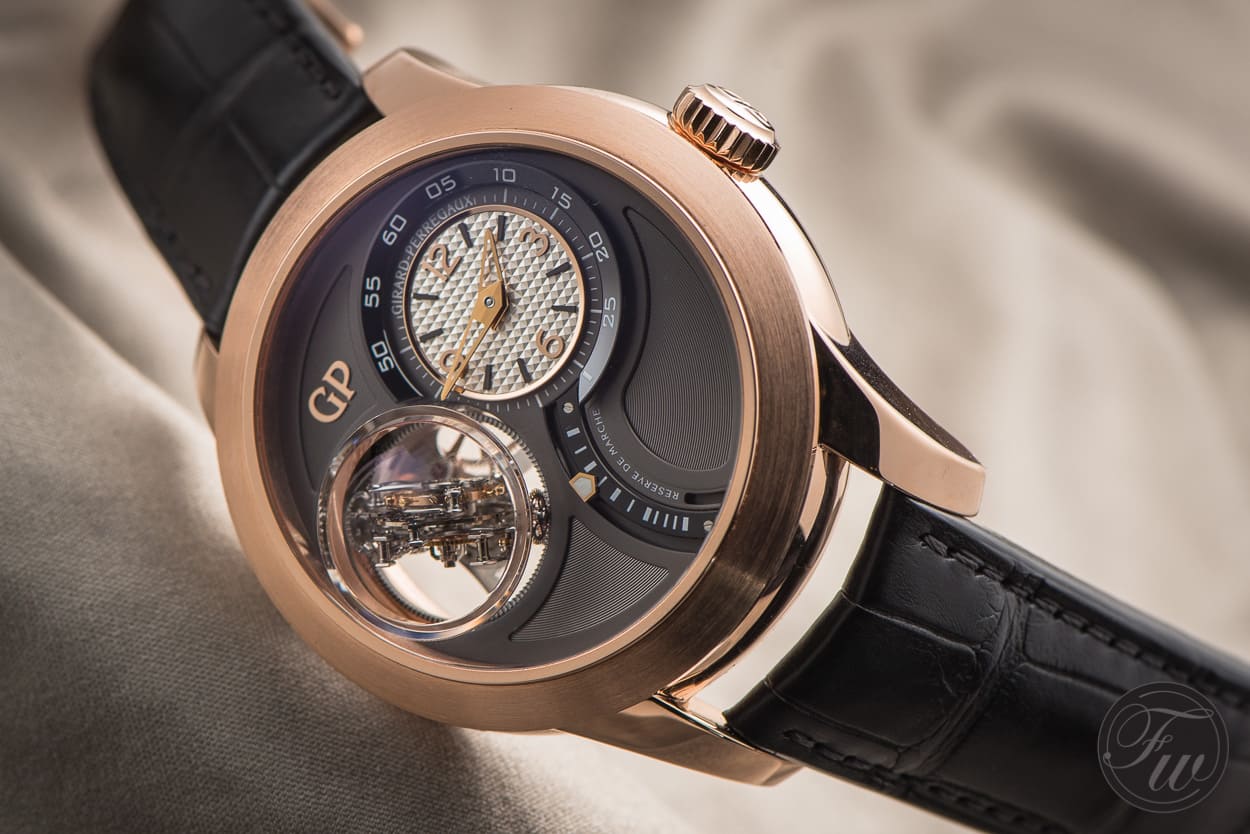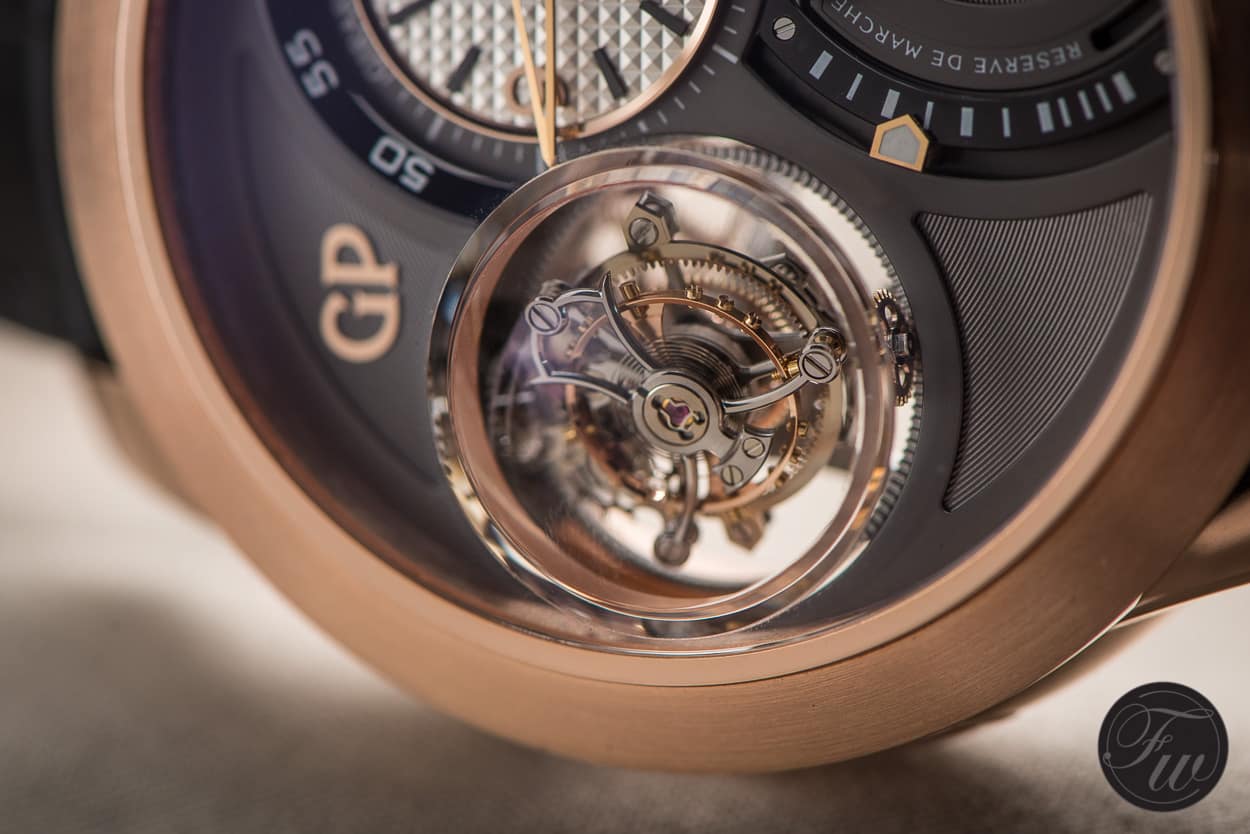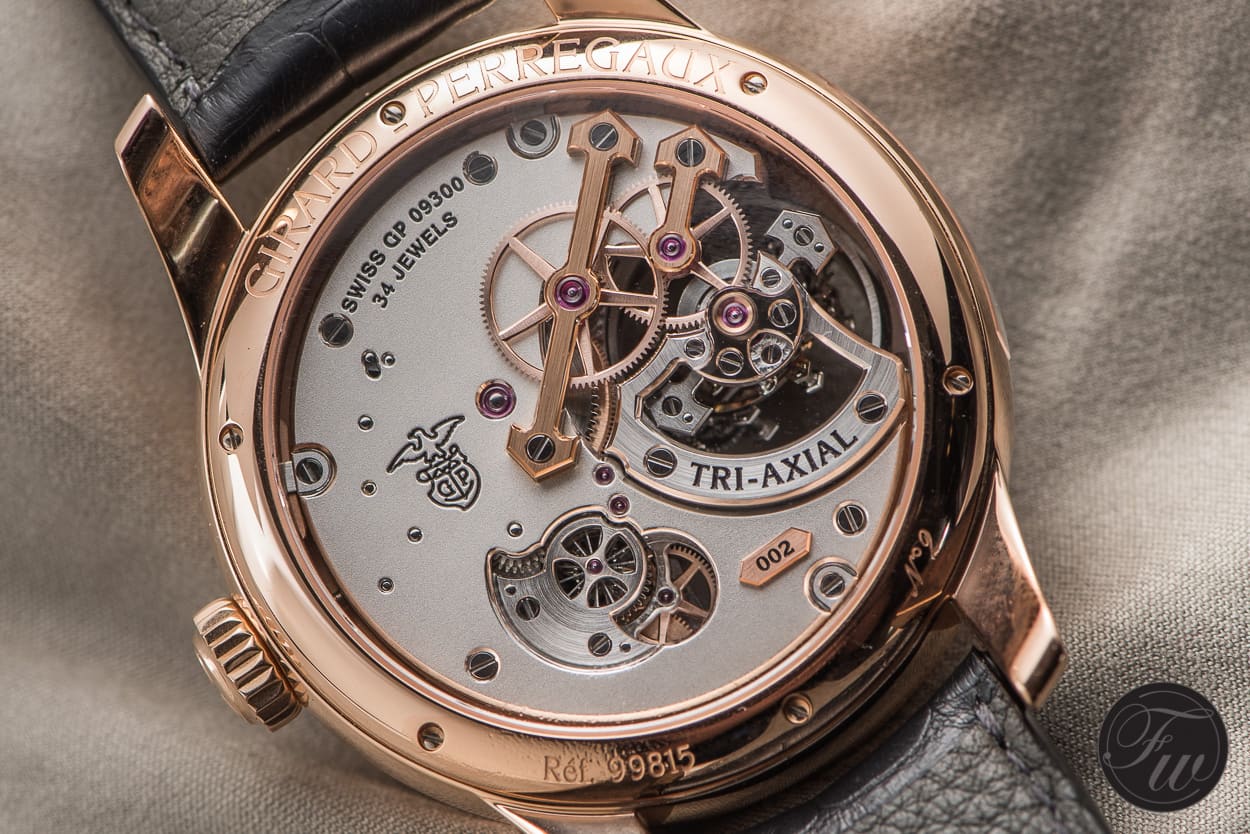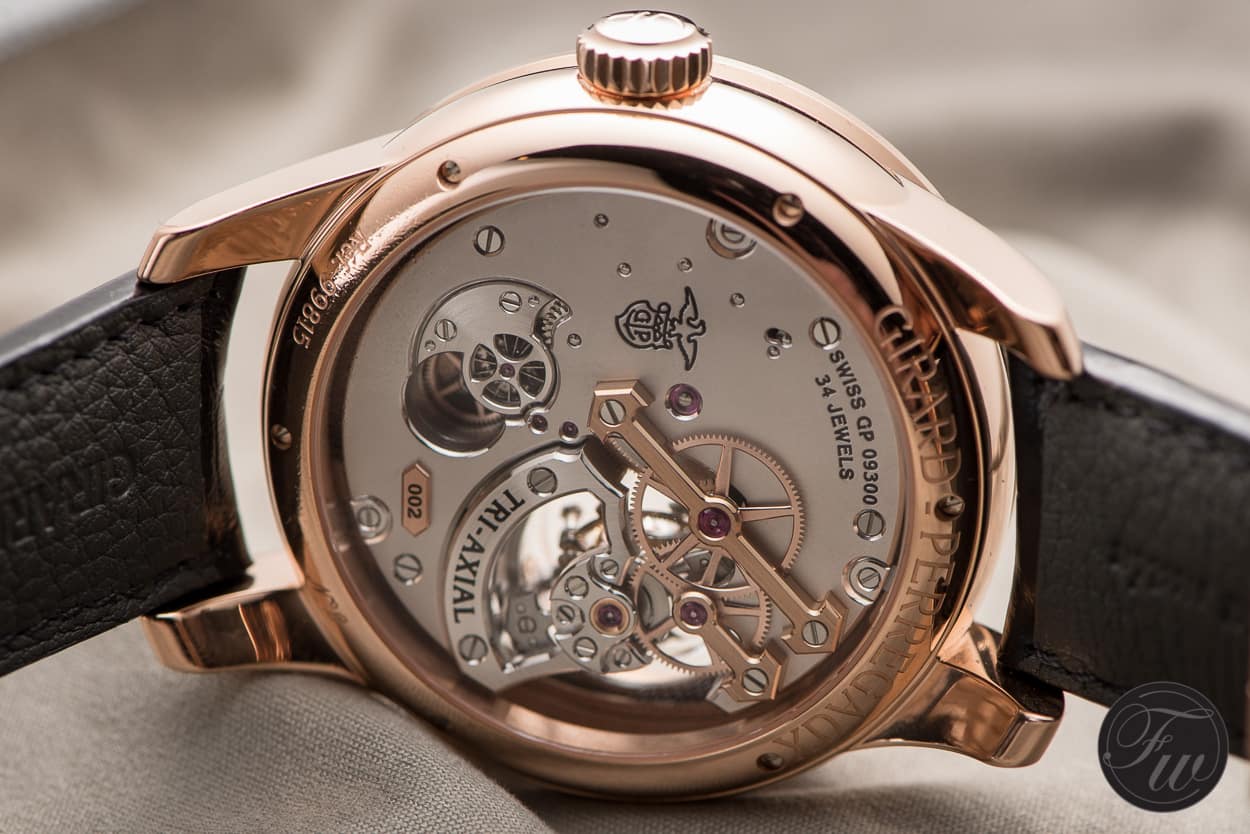Girard-Perregaux Tri-Axial Tourbillon
One of the big surprises this year in Basel was the Tri-Axial Tourbillon timepiece by Girard-Perregaux. This company from La Chaux-de-Fonds in Switzerland has basically two pillars for their collections, watches and haute horlogerie. During our visit to Girard-Perregaux (you can find our report here), we noticed that these are really physically separated as well. Like Chinese Walls.
 The Girard-Perregaux Tri-Axial Tourbillon Reference 99815-52-251-BA6A is part of the haute horlogerie collection of course. The decentralized dial – using a Clous de Paris motif – indicating hours and minutes is located at half past one while a huge aperture (or dial) for the tourbillon cage is at 9 o’clock. The dauphin shaped hour and minute hands as well as the power reserve indicator and GP logo are executed in pink gold, to perfectly match the 48mm case.
The Girard-Perregaux Tri-Axial Tourbillon Reference 99815-52-251-BA6A is part of the haute horlogerie collection of course. The decentralized dial – using a Clous de Paris motif – indicating hours and minutes is located at half past one while a huge aperture (or dial) for the tourbillon cage is at 9 o’clock. The dauphin shaped hour and minute hands as well as the power reserve indicator and GP logo are executed in pink gold, to perfectly match the 48mm case.
As the name Tri-Axial suggests, the timepiece has a regulator on three different axes. The tourbillon cage performs one rotation in a good ol’ 60 seconds, like we are used to. This cage is integrated in another rotating structure in a second axis and performs a full rotation in 30 seconds. Both these constructions are then placed in a third and last rotating construction, put on a third axis and performs a full rotation in 2 minutes.
To give the tourbillon cage enough space to comfortably move around, Girard-Perregaux made sure the sapphire crystal has an extra dome right above the tourbillon aperture. On the left side of the case, you will also see a see-through sapphire crystal so you can admire the tourbillon’s movements from that angle as well. We’ve seen a similar construction with the Omega Deville Hour Vision, which enables the wearer to sneak peek at the intriguing inner workings of his (or her) watch.
 The tourbillon aperture is large. Huge even. According to the technical specifications in the press release that we received the diameter of the ensemble comes to 13.78 mm. It appeared to us – after studying some of the close-ups a bit using our photo processing software – that the tourbillon aperture is even larger than the dial that indicates the time.
The tourbillon aperture is large. Huge even. According to the technical specifications in the press release that we received the diameter of the ensemble comes to 13.78 mm. It appeared to us – after studying some of the close-ups a bit using our photo processing software – that the tourbillon aperture is even larger than the dial that indicates the time.
Let’s not forget about the power reserve indicator that is located below the dial and makes a nice curve towards the centre and ends somewhere between 5 and 6 o’clock on the dial. The power reserve of this watch is about 52 hours and since it is a hand-wound movement, it is actually a useful complication – or indicator – to be on the dial.
The parts of the dial that are not taken by the decentralized sub dial for indicating time, the aperture for the tourbillon cage or the power reserve indicator are beautifully finished with a smooth grain. The grained area at 11 o’clock shows the GP logo in pink gold. Although the dial has a lot to show, the design is very easy on the eyes and far from being cluttered.
Girard-Perregaux’s movement caliber GP09300-0001 is just as clean-looking as the dial of the timepiece. Beautiful gold bridges are used for various parts of the movement (including a plaque that bears the individual number of the timepiece) and reminding us of the Tourbillon with Three Bridges’ shapes. The mirror-polished surfaces and perfect chamfering is all finished by hand, like it should be on haute horlogerie pieces like this. This exceptional finished movement consists of 317 components. On the left on the picture below, you will also probably recognize the engraved eagle, the symbol of the La Chaux-de-Fonds company since 1897.

 Only 10 of these beautiful haute horlogerie pieces will be manufactured by Girard-Perregaux. The GP Tri-Axial Tourbillon comes on a black hand-stitched alligator strap with a pink gold folding clasp and each piece will be individually numbered (see above). Whether the owner of such a watch strives for perfect accuracy due to the three axis tourbillon or wants a timepiece that no-one else in the board room has, Girard-Perregaux definitely knows how to create a buzz among fans of haute horlogerie during BaselWorld.
Only 10 of these beautiful haute horlogerie pieces will be manufactured by Girard-Perregaux. The GP Tri-Axial Tourbillon comes on a black hand-stitched alligator strap with a pink gold folding clasp and each piece will be individually numbered (see above). Whether the owner of such a watch strives for perfect accuracy due to the three axis tourbillon or wants a timepiece that no-one else in the board room has, Girard-Perregaux definitely knows how to create a buzz among fans of haute horlogerie during BaselWorld.
More information can be found here.





